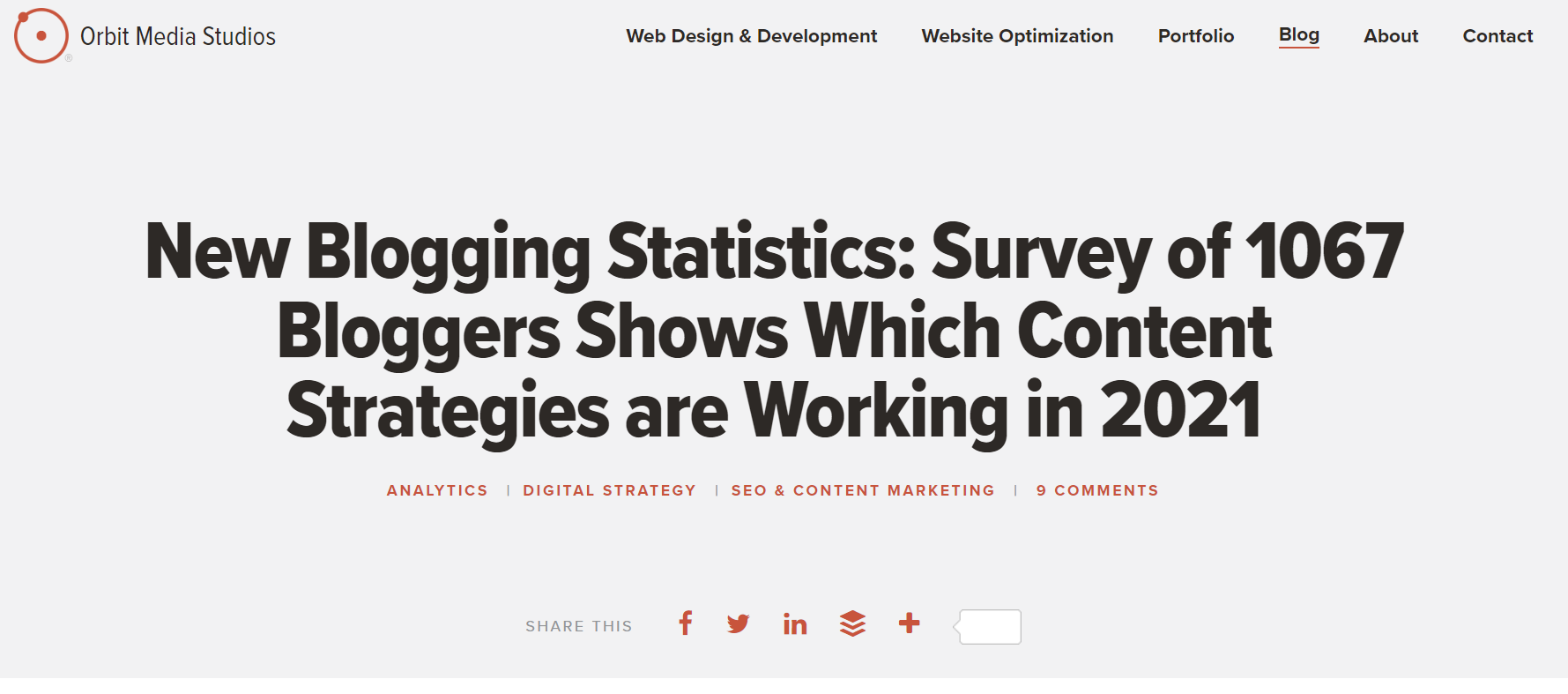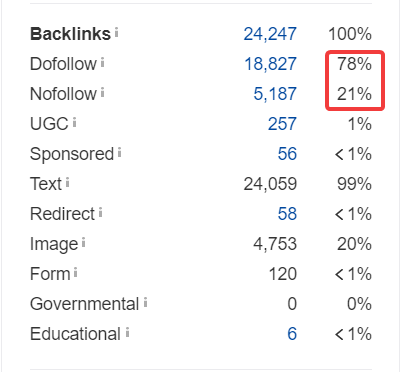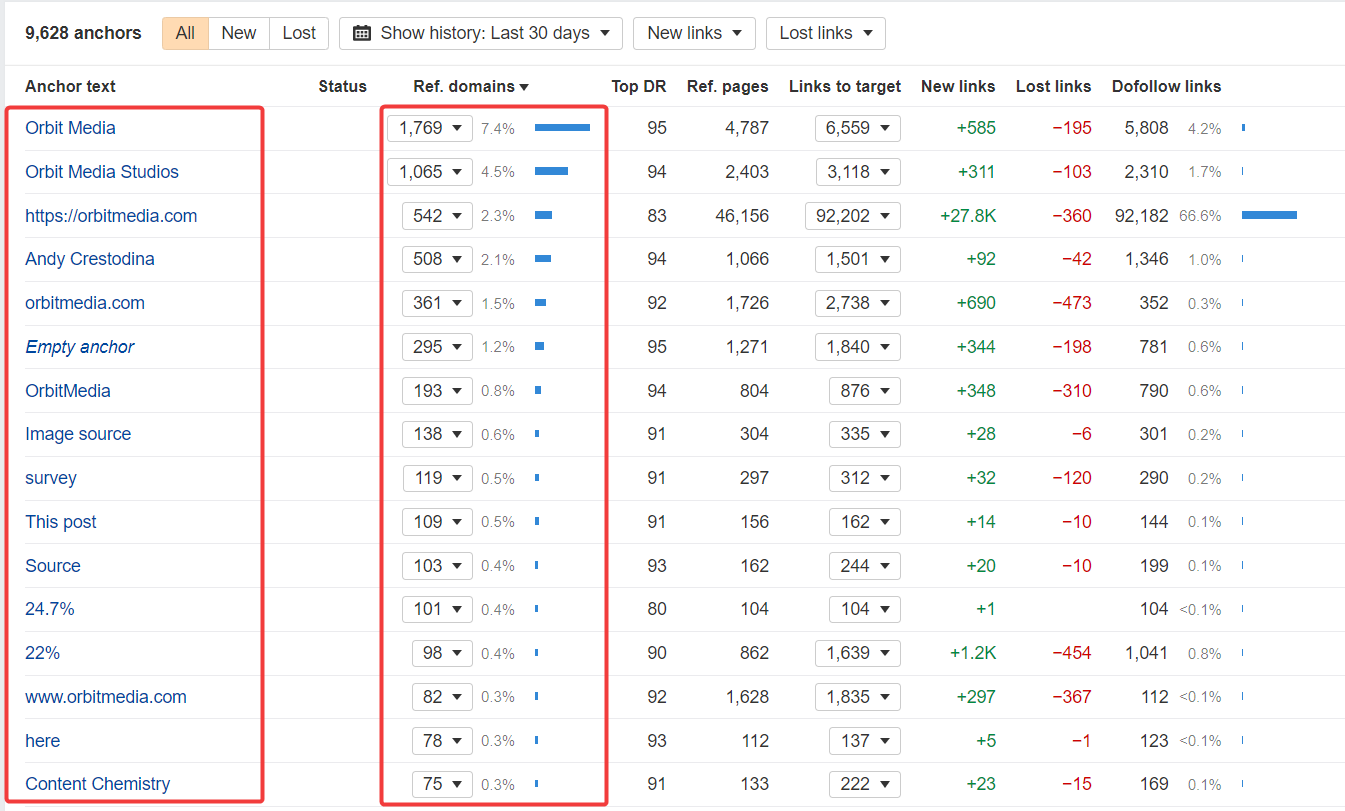SaaS link building is a unique and exciting journey for every SEO team. Lots of tactics to try. Lots of failures to deal with. Lots of hours to spend crafting the best link building strategy for your business.
In the end, your SaaS website will either win or lose in search rankings.
To prevent the latter, we’ve put together the 20 most effective link building strategies, so you can replicate any and enjoy your link profile growth.
Ready to level up your link building efforts? Let’s dive right in!
What is SaaS Link Building?
SaaS link building is the process of building high-quality backlinks from relevant websites to your website. You need to acquire backlinks because they are one of the three key ranking factors for search engines. The more quality and relevant domains pointing to your site, the more trust Google gives you (i.e., higher rankings in the SERPs).
Why is Link Building Important for SaaS Companies?
To be blunt with you, it’s nearly impossible to crack the SERP without having a decent number of backlinks. Some SERPs and niches are very competitive, and apart from good technical SEO and great content, your site may need quality backlinks to break into top positions.
«But why for SaaS companies? What if my product is unique?» you may ask.
For search engines, it doesn’t matter whether you’re a SaaS company or e-commerce. When Google analyzes your site, it looks at topical relevance, content depth, AND the number of authoritative websites linking to your pages. Then, Google compares these data points (and other 200+ ranking factors) against pages already in search results and decides what position you’re worth ranking for.
So if your SaaS provides cold emailing automation, you automatically compete with about 24,000,000 pages for this keyword!
In turn, backlinks will signal to search engines that other people love your content to the extent they want to show it to their audiences. Hence, Google might consider ranking your site higher.
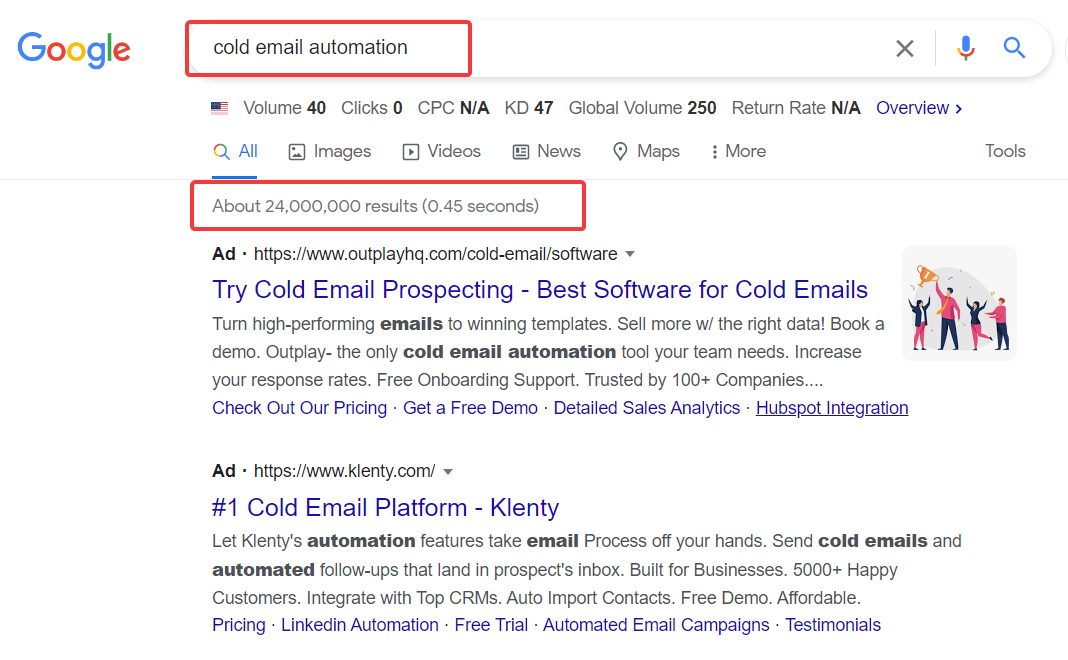
Lastly, here is an example of how 36 links helped one of the Ahrefs pages rank #1 for «SEO stats.»
Now let’s get to the fun part and learn the 20 tested tactics to build links to your SaaS!
20 Tested Link Building Strategies Suitable for SaaS Companies
Our Digital Olympus team recognizes each of the tactics below. They all stood the test of time and have been bringing dozens of links monthly when done right. Implement as many of them as you can, and you will create a durable link building process.
Strategy #1: Claim unlinked brand mentions
This is one of the best and fastest tactics for SaaS link building.
Unlinked brand mentions are the mentions of your company on other websites that don’t link to your website. Simply put, it’s when somebody writes about your SaaS product but doesn’t include a hyperlink under your SaaS brand name.
«We see this opportunity for companies who have raised a round of funding and get write-ups in trade magazines about it without a link. Another big one is after a rebrand, and you’re not only looking for unlinked mentions of the old brand name but also linked mentions that now need to update the brand name and the hyperlink.
The approach can be quick wins, but it helps if the company’s site has a solid reputation and DA, so there’s a value the referring site receives by including the hyperlink besides just being kind.» — Dave Polykoff, CEO & Co-Founder of Zenpost
That said, you can reach out to the author via email/LinkedIn and ask them to place a link to your relevant landing page or blog post. But first, we need to find unlinked mentions.
You can use two methods to do so. The first one is manually searching for unlinked mentions using Google search operators. Type the following query into the search bar and analyze the search results.
intext:{brand name} -{website.com} -twitter.com -facebook.com -pinterest.com -youtube.com -linkedin.com -instagram.com -quora.com

The second method to find unlinked brand mentions is to utilize brand monitoring tools like Brand24 or Mention. They crawl social media and the web 24/7 and detect new brand mentions. You can also monitor your competitors' mentions and niche-relevant keywords. Thus you will get more sites for link prospecting.
Strategy #2: Discover broken links
Broken link building is another great backlink-building technique if you have valuable content to offer. Let’s get more granular here.
Broken links refer to backlinks that direct to pages that are no longer accessible (e.g., a 404 page not found error). Basically, such links redirect website visitors to no longer existing content, which is not cool in terms of user experience. However, it’s a great opportunity for link builders.
«When I link build, I like to do it from broken pages, mainly because it actually helps the webmaster who may not have otherwise known the link was broken
However, time permitting, I suggest taking the broken link building strategy a step further and creating an updated version of the page. This keeps the content fresh for them (Ed., for webmasters), improves their odds of ranking higher, and therefore improves the value of the link long term." — Tommy Walker, Founder of The Content Studio
You can analyze competing and niche websites with Ahrefs (check out the example below) and find websites that link to broken pages. You then contact webmasters and ask them to swap out the broken link. Webmasters will gladly make this change if your content is top-notch and appealing to readers.
To find promising broken links, use Ahrefs’s Best by links report and apply a «404 not found» filter.

Strategy #3: Create free tools
This is a «must-use» link-building strategy for almost every SaaS business. Free tools not only help users to get their job done, but they also attract A LOT of backlinks and organic traffic.
A free tool can be anything relevant to your niche or to your main product (or a part of it). For example, Ahrefs built a range of free SEO tools based on their data. Free Backlink Checker has amassed 5,620+ referring domains so far!
But you don’t need to be a big name like Ahrefs to start gaining links to your tool. You can create something smaller but useful, like the ROI calculator (or any), and give it a shout on social media.
For instance, Hootsuite, a social media planner, created the social ROI calculator and so far has acquired 140+ links from top-notch sites with 90+ DR like Hubspot or B2B Community.
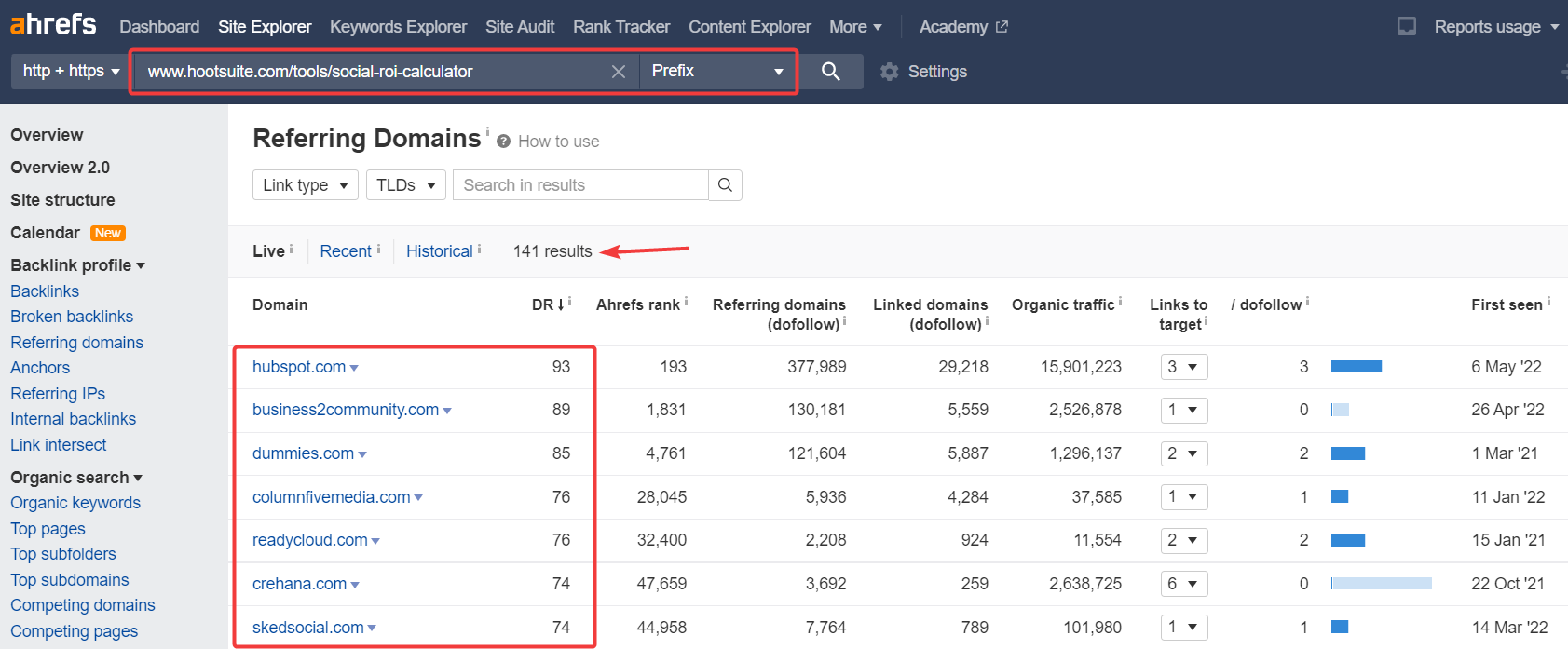
Strategy #4: Publish linkable assets
Linkable assets are pieces of high-quality content with unique and enticing data that users like to link back to:
- Case studies & research
- Pages with statistics
- Surveys
- Awards & rankings
- Infographics
- Coined terms
- Opinionated content & roundups
The uniqueness is what makes it special. As SaaS, you have lots of data under your belt that you can frame in enticing research. Such content pieces tend to gather a ton of links because when writers and journalists create content they rely on statistics, metrics, or quotes to prove their angle.
Besides collecting unique product data, you can also start off with more straightforward methods, such as conducting niche surveys or creating niche awards.
So far, this piece, based on surveying 1067 bloggers, has landed 3,417+ unique links!
«At Surfer, our favorite tactic by far is an inbound link acquisition strategy through creating linkable assets. As such, we created Keyword Surfer, a free keyword research Chrome extension that helps users find search volume and related keyword ideas within their browser, plus a ton of other metrics.
In two years, the tool has amassed over 1,600+ ref. domains. Today, it has 400,000+ users, and we’ve spent a grand total of $ 0 in promotional campaigns!» — Tomasz Niezgoda, Head of Marketing at SurferSEO

Strategy #5: Give testimonials
Many SaaS companies utilize a number of tools across different teams. CRMs, prospecting tools, content marketing planners, and even email tracking tools — are all link-building opportunities.
You can reach out to any software you’ve used and offer them feedback in exchange for a backlink from the testimonials block.
Strategy #7: Get links from relevant resource pages
Another straightforward way to get links is to use resource pages. These are hand-curated lists of tools, websites, experts, etc. The main idea of resource pages is to gather as many similar solutions in one place as possible.
You can find resource pages in any niche, from the best tools for link building to fast-growing startups in MarTech. What’s left is to reach out to an editor and ask them to mention your SaaS as well.
Strategy #8: Find link prospects with reverse image search
This technique is a gold mine for link prospecting. For SaaS, it helps generate lots of quality links without doing much work. So how does it work?
When you create blog posts, you will likely accompany each with unique visuals (e.g., screenshots, charts, infographics, and so on). Sometimes, other outlets will steal your work (images) without giving credit back. This is when a link opportunity appears.
For instance, you’ve created a viral infographic, or you have high-traffic blogs with unique charts and screenshots. The chances are that somebody uses your visuals in their pieces without linking back. This is a copyright violation you can leverage.
To find unauthorized uses of your images, use reverse image search (Google or Bing image search). Here are the three ways to do so:
- If you’re a Chrome user, right-click on the image and choose «Search image with Google Lens.»
- Paste the URL of the image in Google Images and run the search.
- Upload an image (infographics, unique charts) to Google Images.
This tactic «combos» exceptionally well with linkable assets since not everyone who refers to your data will give it credit.
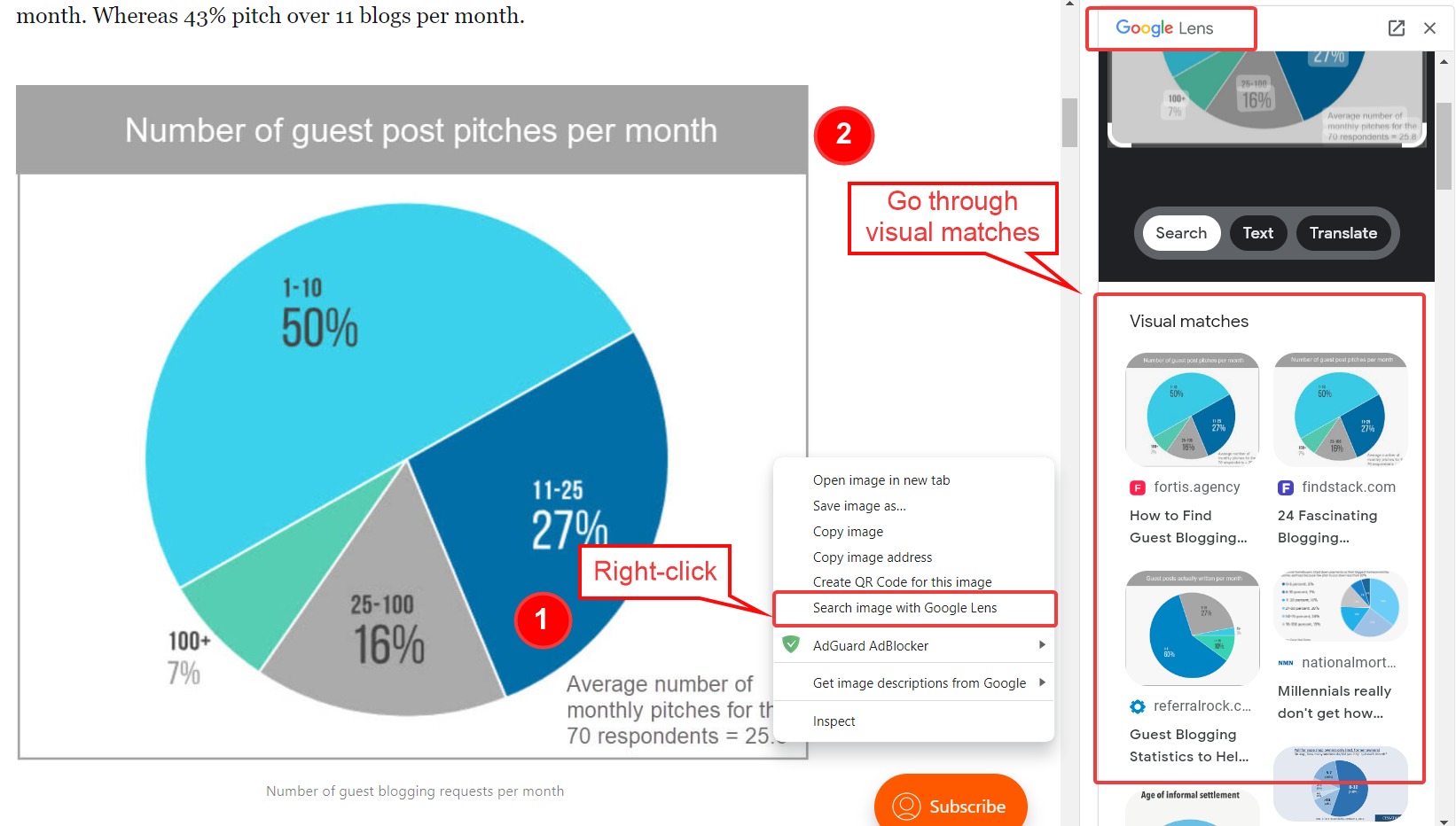
Strategy #9: Leverage expert roundups
Most of the time, SaaS companies serve specific niches and solve particular problems. That’s why roundups are a great link building method for SaaS companies.
You can both create your own roundups and mention other subject-matter experts, thus building a foundation for all kinds of content collabs. Or you can participate in others and instantly get links.
Strategy #10: Give interviews
As simple as it sounds, giving interviews can be done under a link building scope.
Every SaaS company has a story. What it’s all about, how it’s grown, its ups and downs, hacks to develop or maintain customers, etc. The key is that each story is unique and valuable. Hence, it’s a great opportunity to pitch media outlets and relevant blogs.
The more transparent and authentic you are in the story, the more viral it might become and the more link building opportunities you might create.
Strategy #11: Do outreach for guest posting
The classic outreach for guest blogging works well for SaaS companies, too, if done right. The key element of effective guest posting is forging relationships with editors before pitching them. Get on their radar by engaging with their content on social media. Ask them to take part in roundups or give quotes for your pieces.
«At Hunter, we write about 10 guest posts per month, but for every 10 guest posts we publish, we can build between 20 and 50 backlinks. Collaborating with other guest bloggers is key to scaling up your link building through guest posts.
Usually, websites allow 1−5 external backlinks. Let’s say you add 1 backlink to your domain and 4 to your partners. You expect that partners will return the favor and build great backlinks to your domain. That means you generated 5 backlinks from unique domains with a single guest post. If you write 10 guest posts per month, that can easily be 50 backlinks.» — Antonio Gabrić, Outreach Manager at Hunter
Basically, it’s all about genuine human connections. Once you gain trust, you can help each other grow via different content collaborations and link building opportunities.
Strategy #12: Contact reporters through HARO
HARO (help-a-reporter-out) is a tool where journalists and reporters leave queries for industry professionals to then quote or interview them in upcoming stories. There are hundreds of subtopics and thousands of journalists' queries per day, so you can play with HARO for a while and see what you can get out of it.
Link builders and digital PR professionals love HARO because they can pitch their content directly to outlets. You’re likely to be featured if your content is original and insightful (especially if it’s data-driven).
«I really enjoy a more niche version of HARO that’s called 'Help A B2B Writer'. My HAB2BW link building strategy is simple: get into the habit of routinely checking all source requests for topic, relevance, and quality of the publication. If there’s something in there that suits my expertise, just type out a response and send it over.
As such, I scored an 86 DR link from CoSchedule, not even remembering writing for them.
Bear in mind that this only really works for proper B2B niches. I tried sourcing some content from e-commerce managers at some point and saw little to no results.» — Jonas van de Poel, Head of Content Marketing at Unmuted

Journalists from top media use HARO all the time, so you can get a spot on Forbes, Entrepreneur, and Business Insider, to name a few. Definitely worth a shot.

Strategy #13: Harness the power of podcasts
Podcasts (and webinars) play a big role in the SaaS scene. There are thousands of SaaS-related podcasts and industry-related podcasts out there. You can leverage this channel to get backlinks if you have a story to tell.
Of course, hosting or participating in podcasts shouldn’t be done just for links, but they can be a nice bonus. On top of it, you will get colossal brand exposure, valuable connections, and new leads.
Strategy #14: Take advantage of product embeds
Product embeds are another link building strategy for SaaS companies. This is when a company allows users to embed a part of the product on their websites.
For example, if your tool is for analyzing social media influencers, you can sell/give a small sample of your data to embed. Let’s say only 10 first results by keyword. If users want to get more, they should be redirected to your website.
This tactic usually comes together with an affiliate program. So you can get both links and new leads.
The other way to get links from product embeds is to build your link into the product, as Typeform did. Users automatically link back to Typeform when embedding Typeform on their sites.
Strategy #15: Leverage your integration partners
As for a SaaS company, you may create lots of integration with other tools to improve customer experience and allow customers to perform different tasks in one place. Integration partners are not only important for your SaaS growth, but they can also bring in some awesome backlinks.
Every time you create an integration, make sure you and your partner announce it on your blogs. Not only will it bring a backlink but also brand exposure and lead generation opportunities. On top of that, somebody can pick up this story and cover it on their media, leading to even more links.
Strategy #16: Be a speaker at online conferences
Like with podcasting, you can bolster your brand awareness and get some juicy links by participating in online conferences and webinars.
Most times, hosts repurpose online events into blog posts, gathering the most valuable insights from each speaker in one or separate posts (i.e., you get a link).
Clearscope’s Bernard Huang shares his insights on this approach:
«Webinars are a great way to leverage other people’s audiences to create win-win situations for both the presenter and the host. At Clearscope, we’ve been doing weekly webinars for almost 2 years and that’s gotten us a ton of exposure and links, especially to our webinar blog posts (e.g. like this one).
The key piece to making a webinar strategy work is to be consistent, share attendee lists with speakers, and to make sure the content being presented is high quality." — Bernard Huang, Co-Founder of Clearscope.
As a cherry on top (and to prove the efficiency of webinars and repurposing them as blog posts), Bernard shared with us a graph reflecting Clearscope’s backlink growth:

As you can see, it’s a strategy worth trying.
Strategy #17: Create thought leadership content
Thought leadership content is not exactly a direct link building strategy, but it can attract backlinks. What we mean is that you can write provocative bold (or even cheeky) content to spark a discussion around it. Like an unpopular opinion on the topic X, your take on some stuff that drives you crazy, etc.
Take a look at how Ahrefs, specifically Tim Soulo, does it. One post with a provocative headline gathered over 600+ referring domains! Now you can go and open this post in Ahrefs and analyze in what context other websites refer to it. Brainstorm ideas that might resonate to the same extent, and give it a try!

You can also write the most practical or unique guides on the subject and, in doing so, create thought-leadership content that passively earns backlinks and attract prospective customers. Here’s how Lemlist approached it.
«Create something incredibly unique and evergreen, with a value that will never evaporate. Then, think about the initial distribution plan to sparkle some attention and get people to check it out. When you have both, people start linking to your guide.
For instance, the articles in the screenshot were extremely tactical, with lots of real email examples. The pieces were also distributed across social media sales and outreach communities, from where people picked it up.» — Vukasin Vukosavljevic, VP of Marketing at Skillful, ex-Head of Growth at Lemlist.
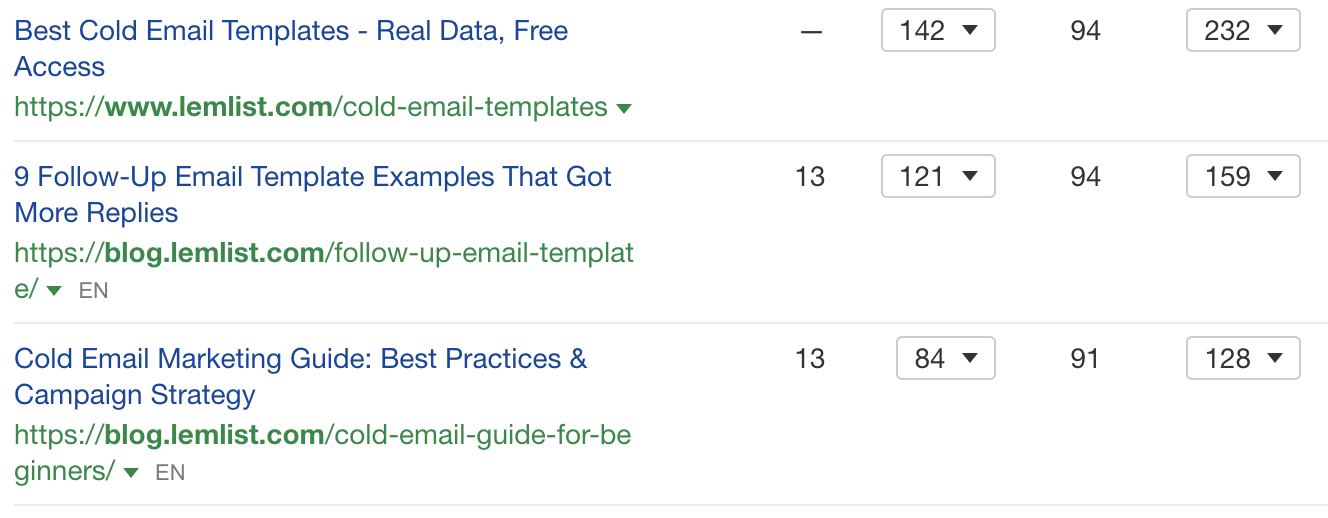
Strategy #18: Use the Skyscraper technique
The Skyscraper technique is one of the most famous techniques that drive links through content creation. But it’s not the easy one. You should invest heaps of time in deriving links from it. Why?
Because the idea of the skyscraper technique is to create the absolute best content on a particular topic to get everybody to refer to it. In other words, your article should outcompete every other article on the web in depth, length, or examples.
It’s not that scary and will pay off big time 🙂 So let’s break down the basics of this tactic.
- Conduct competitor backlink analysis and find the most linked-to content pages (blogs, pillar pages, e-books).
- Examine each of these pieces and think about how you can beat them (more examples, more tactics, more data).
- Create your stellar content
- Give it a shout on social media
- Reach out to the websites that linked to your competitor’s content and encourage them to take a look at your piece. Explain briefly why it’s better. Ask them to consider linking to your page instead of an existing one.
You can also ask what you should include next time to make your piece of content even better. This way, you will engage an editor in a conversation and humanize your pitch.
Strategy #19: Reposition your backlinks
Link repositioning is quite an interesting strategy that SaaS companies can take advantage of.
Many SaaS companies have gazillions of links pointing to their homepages as they are mentioned in relevant industry articles. Link repositioning is finding links that target the homepage but could target another page (e.g., landing page, blog post) and asking webmasters to reposition links.
This way, you can redirect link juice to the needed web pages.
Strategy #20: Encourage others to review your product
This tactic has been used since the days of the dinosaurs, and yet it’s still effective! Find bloggers and contributors who write about your niche and invite them to review your product. In exchange, you might award them with 3-month access, higher affiliate payouts, etc.
People are curious about new solutions by nature and are willing to try them out in most cases. So even though you get a few rejections (it's inevitable), you’ll land some cool reviews too.
Not only will you land links but also referral traffic and brand exposure.
With that, let’s jump to the next chapter and learn which link building tactics you should avoid at all costs and why.
3 Common Black Hat Link Building Tactics to Avoid
While building links, you will hear many stories about «successful» and fast techniques that are known only to chosen ones. Is that even true? It depends. Yes, there are some «black hat» tactics that promise you to land hundreds of links in no time. BUT we never recommend you choose this path.
All these tactics abuse Google Webmaster Guidelines. It means that outsmarting Google algorithms in order to manipulate your site’s ranking will result in a huge loss — Google is likely to penalize your site (i.e., you will lose positions in the SERP).
So let’s get familiar with tactics to avoid.
Tactic #1: Pay for backlinks
Paid backlinks are a direct violation of Google Webmaster Guidelines. Links from PBNs (private blog networks), paid guest posting, paid directories, and other spammy sites where you can buy a link — all of these are considered paid links.
If somebody complains to Google about you participating in link schemes (which happens sometimes), the chances are you will get a penalty from Google. Consequently, you’ll spend months and hundreds of $ to recover your site.
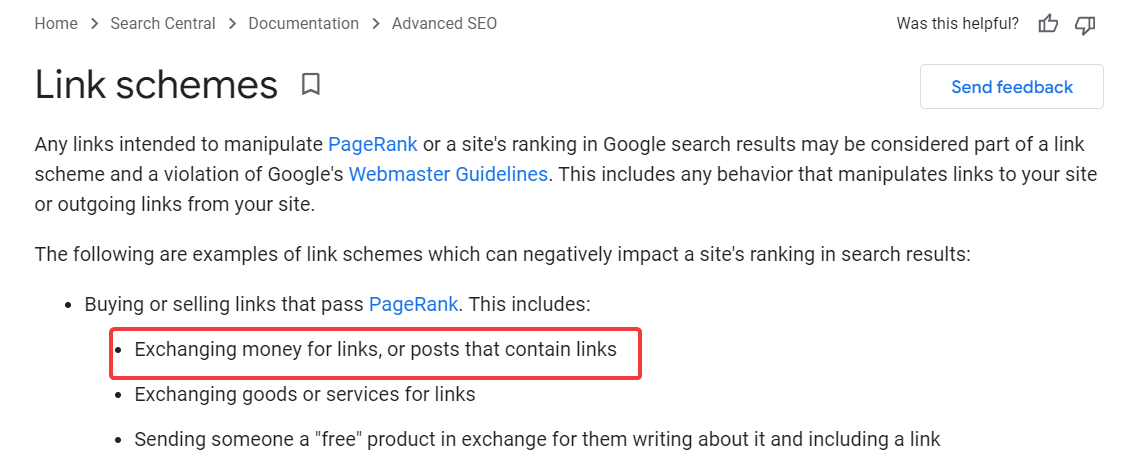
Tactic #2: Excessive link exchanges
Excessive link exchanges are also considered an abusive tactic in Google Webmaster Guidelines. While linking to each other is natural, it’s only to a certain degree. If most of your links are reciprocal, you’d better start using «white hat» tactics.
In the end, excessive link exchanges seem unnatural to Google and are easy to detect (and get penalized).
Tactic #3: Anchor text abuse
Anchor text is a Google ranking factor. That’s why SEOs try to manipulate anchor text to improve their rankings in search engine results. However, keyword-rich anchor text links or optimized anchor text abuse Google rules. If noticed, your site might get penalized. Also, it’s very risky to use exact match anchor text in backlinks.
You can read about the Penguin algorithm to understand better how Penguin checks websites for keyword stuffing (aka over-optimization) and different link building manipulations.

3 Advanced SaaS Link Building Tips
Here, you’ll learn the three practical tips that will level up your link building efforts.
Tip #1: Evaluate your link prospects
Not all backlinks are equal. Some are stronger (with a high domain authority) and can give a better boost to rankings. Such links usually have a DR of 70+.
You should also consider the website’s traffic and niche relevance. These parameters also contribute to the link quality.
If you’re building links from sites with DR 80+ and high traffic but completely irrelevant to your SaaS industry, you’re endangering your site. Google is likely to recognize this as manipulative behavior and lower your rankings.
Tip #2: Diversify your link profile
Acquiring lots of do-follow backlinks can appear unnatural to search engines. That’s why link builders also try to get some no-follow backlinks and enrich a website’s link profile. Ultimately, it can boost your website’s rankings.
Here is what a well-diversified link profile looks like:
Tip #3: Use different types of anchor texts
Diversification is important not only when it comes to do-follow and no-follow links but also when it comes to anchor text.
Keyword-rich anchors have their place, but using more generic anchors can make a website’s backlink profile seem more «natural» in Google’s eyes. Mostly, people put links under different texts, and Google is well aware of it.
Using different anchors and contextually placing links is the way to go.
Now Over to You
SaaS link building strategy is about creativity and a deep understanding of your niche and people’s behavior. With this ultimate guide, you’re all set to start building high-quality links and level up your SEO results!
Experiment with different tactics and capitalize on the ones that work best for your SaaS.
Need a helping hand and the right guidance to get started? We’re here from you! Book a personal demo with our SaaS link building expert and get a link building strategy tailored to your niche.


![SaaS Link Building: Ultimate Guide & 20 Strategies that Work [Examples Included]](https://digitalolympus.net/files/SaaS-Link-Building-Ultimate-Guide-_-20-Strategies-that-Work-Examples-Included-1.png)
